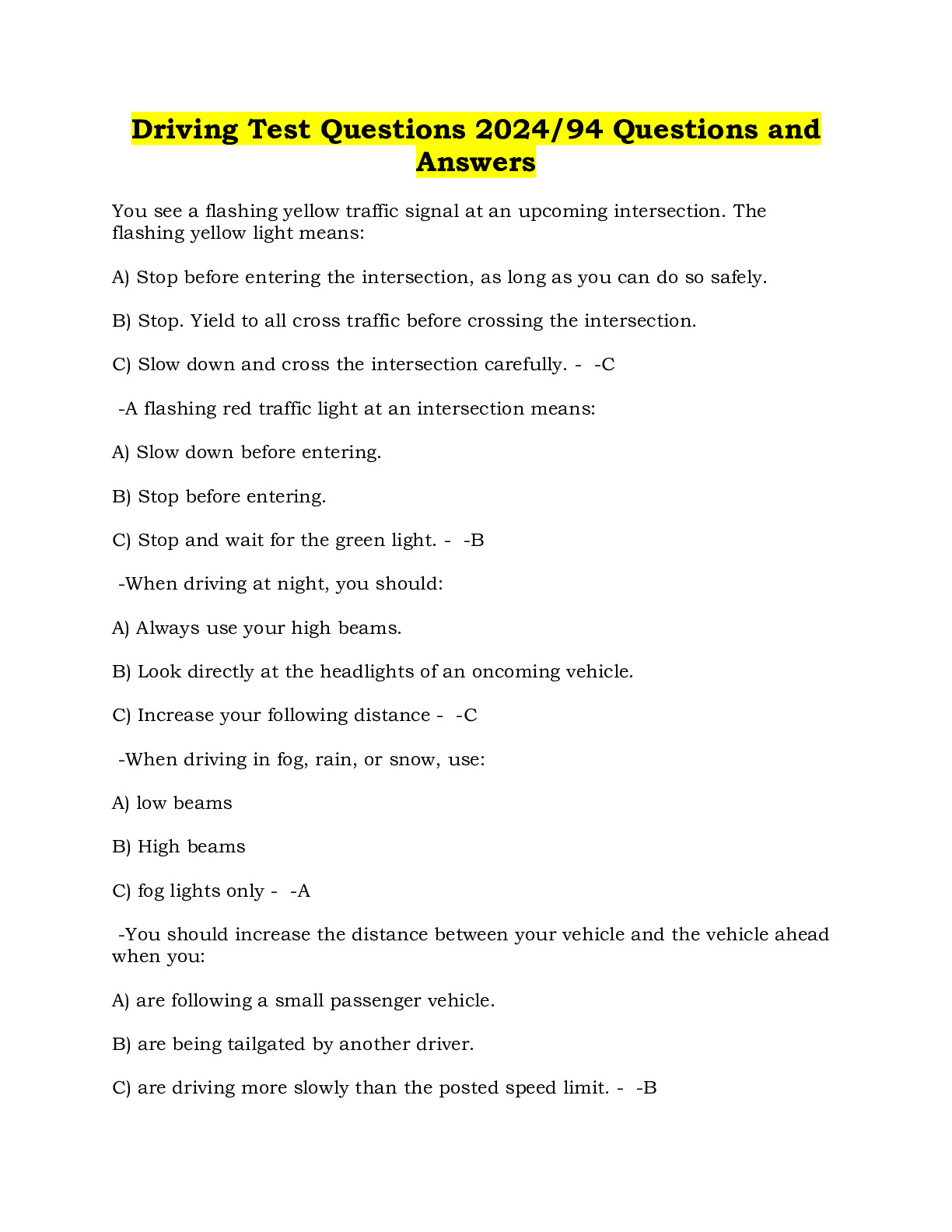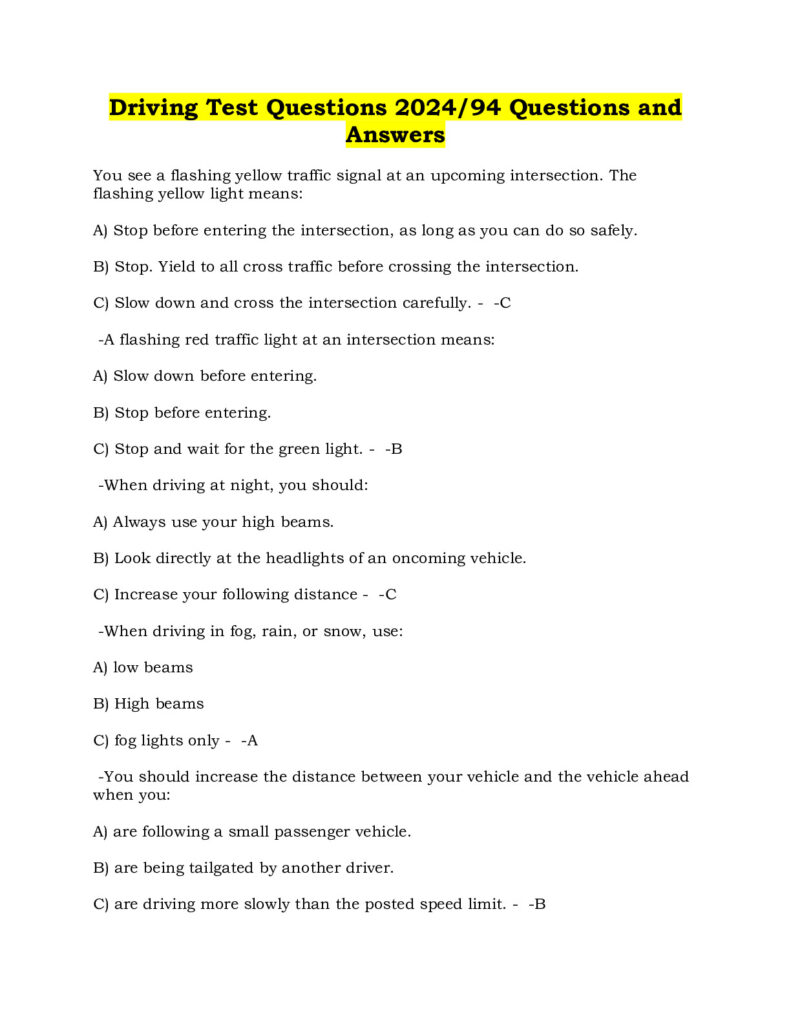Ever wondered why some people skate through their driving test while others stumble on seemingly simple questions? It’s not just about how well you can maneuver your car but also about mastering the knowledge behind the wheel. The driving test often includes a mix of practical queries and theoretical questions that can trip up even the most prepared candidates.
Common questions often revolve around road signs, the rules of right-of-way, and basic vehicle maintenance. For example, candidates might be asked to identify a yield sign or explain what actions to take at a four-way stop. According to a recent statistic, over 70% of test-takers make errors in questions related to speed limits and safe following distances.

What are the most common questions asked in a driving test?
During a driving test, candidates often face questions about traffic signals and road signs. These questions might ask you to identify various signs, such as stop signs, yield signs, and speed limit signs. This part of the test ensures you understand how to interpret and follow the signals on the road.
Another common category involves right-of-way rules. Test questions may present scenarios, asking who has the right-of-way in situations like four-way stops or pedestrian crossings. This helps confirm that drivers can make safe decisions when navigating intersections and other challenging areas.
Speed limits and safe driving practices are frequently tested. You might be asked about the maximum speed allowed on different types of roads, such as highways or residential areas. Understanding speed regulations is crucial for maintaining safety and compliance while driving.
Questions regarding basic vehicle operation and maintenance are also typical. For example, you might need to explain how to check the oil level or what to do if a dashboard warning light appears. This section ensures that drivers can handle minor vehicle issues and keep their car in good working order.
Identifying Traffic Signals and Road Signs
Knowing how to identify traffic signals and road signs is crucial for any driver. Traffic signals include lights that manage vehicle and pedestrian traffic, such as red, yellow, and green lights. Understanding these signals helps keep drivers and pedestrians safe on the road.
Road signs provide necessary information and warnings to drivers. These signs include speed limit signs, stop signs, and yield signs. Learning the meaning behind each road sign ensures that drivers can respond correctly to different road situations.
There are various categories of road signs, such as regulatory, warning, and guide signs. Regulatory signs like “No Parking” or “Do Not Enter” indicate laws you must follow. Warning signs, such as “Slippery When Wet,” alert drivers to potential hazards.
Guide signs provide helpful information, such as indicating upcoming exits or showing directions to nearby cities. Recognizing these signs allows drivers to navigate effectively and reach their destinations safely. Understanding all these signals and signs is an essential part of the driving test.
Interpretation of Right-of-Way Rules
Understanding right-of-way rules is essential for safe driving. These rules determine which vehicle has the priority in different traffic situations. Knowing who goes first can prevent accidents and ensure smooth traffic flow.
At intersections, right-of-way rules help decide the order of vehicles. For example, at a four-way stop, the first vehicle to arrive has the right-of-way. If two vehicles arrive simultaneously, the one on the right proceeds first.
Pedestrian crossings also have specific right-of-way rules. Vehicles must always yield to pedestrians at crosswalks. Failing to do so can result in fines and increase the risk of accidents.
Right-of-way rules vary depending on the situation, such as turning left at an intersection or merging onto a highway. These rules are part of the driving test to ensure that all drivers understand how to navigate complex traffic scenarios safely.
Understanding Speed Limits and Safe Driving Practices
Speed limits are set to promote safe driving and reduce the risk of accidents. They vary depending on the type of road and location. For instance, residential areas often have lower speed limits to protect pedestrians and children.
Highways typically have higher speed limits than city streets. This is because highways are designed for faster travel with fewer stops. However, even on highways, it’s important to adhere to the posted speed limits to stay safe.
Driving at the correct speed for conditions is also crucial. For example, during rain or snow, it’s often safer to drive below the posted speed limit. Reduced visibility and slippery roads necessitate more cautious driving.
Safe driving practices include more than just obeying speed limits. Maintaining a safe following distance is essential to avoid rear-end collisions. This distance allows you to react in time if the car in front of you suddenly stops.
Other important practices include avoiding distractions like texting and always using seat belts. Defensive driving techniques, such as anticipating other drivers’ actions, can also help maintain safety. These practices are key components of the driving test.
Questions on Vehicle Operation and Basic Maintenance
Vehicle operation questions test your understanding of how a car works. Common questions might include how to start the car, use the turn signals, and operate the windshield wipers. Knowing how to use these controls ensures safe and efficient driving.
Another area of focus is basic vehicle maintenance. You might be asked how to check the oil level or what the symbols on the dashboard mean. Recognizing these symbols can prevent serious problems by addressing issues promptly.
Brake maintenance is crucial for safety. Understanding how to check for brake wear and when to replace brake pads is vital. Some tests might include questions on how to identify these issues.
Tire maintenance is another common topic. You could be asked how to check tire pressure or how to inspect tires for damage. Maintaining proper tire pressure ensures better fuel efficiency and safe driving conditions.
Knowing how to handle minor vehicle issues is also important. For example, you might need to explain how to change a flat tire or jump-start a battery. These skills can be lifesavers in emergencies.
Key Areas to Revise for Success in Your Driving Test
Revise traffic signal and road sign identification. Make sure you can quickly recognize and respond to different signs. This includes both visual recognition and understanding their meanings.
Right-of-way rules are another crucial area to focus on. Practice scenarios where you determine which vehicle has the priority. This helps ensure you won’t hesitate during real-life driving situations.
Review speed limits and safe driving practices. Memorize speed limits for different types of roads and conditions. Brush up on defensive driving techniques to keep yourself and others safe.
Basic vehicle operation and maintenance should also be well understood. Be prepared to answer questions about car controls and simple maintenance tasks. This includes knowing how to check oil levels and identify dashboard warning lights.
Don’t forget practical driving skills such as parallel parking and three-point turns. These maneuvers are often tested during the driving test. Practicing these skills can help you perform confidently and correctly on test day.
Final Thoughts
Preparing for your driving test involves understanding a range of topics, from traffic signals to vehicle maintenance. Focus on core areas like right-of-way rules and safe driving practices. Mastering these subjects will build your confidence and readiness for the test.
Remember, practical driving skills are just as important as theoretical knowledge. Regular practice can make a significant difference. With thorough preparation, you’ll be well on your way to passing your driving test successfully.

